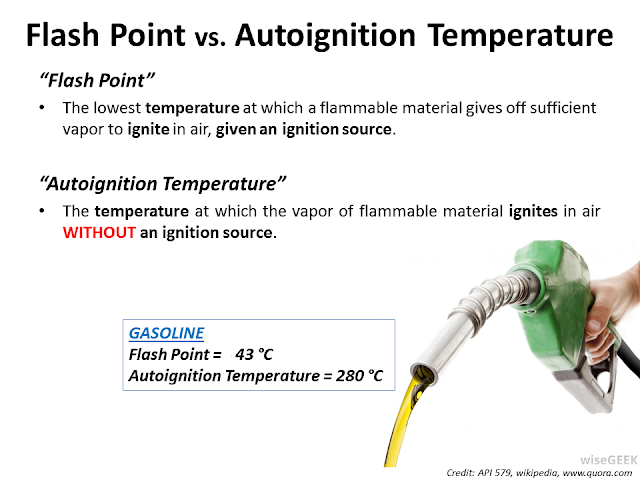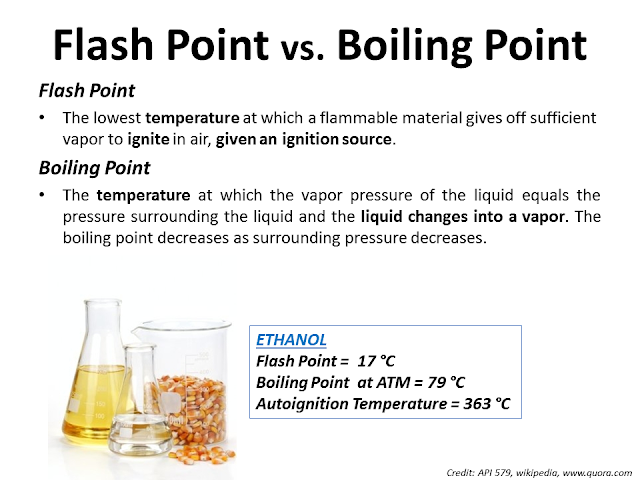Flash Point VS. Autoignition Temperature;
Flash Point is the lowest temperature at which a material or substance ( Flammable materiales) vapors ( Vapor was) enough to be flammable when mixed with air (Air) and a power source ( With The the Source, Ignition).
Autoignition Temperature is the temperature at which the vapor of materials or substances ( Flammable materiales) can spontaneously ignite when mixed with air (Air) without a power source ( online Without the Source, Ignition).
For example, Gasoline can ignite from a temperature of 43 degrees Celsius (Flash Point). If sparks occur And can ignite spontaneously at temperatures from 280 degrees Celsius ( Autoignition Temperature ) without having ignition source.

Flash Point VS. Boiling Point
Flash Point is the lowest temperature that a flammable material has enough vapor to ignite. When mixed with Air and with a Ignition Source.
Boiling Point is the temperature at which the vapor pressure of a liquid is equal to the environmental pressure (Surrounding Pressure) and causes the liquid to vaporize. With the boiling point decreasing in accordance with the decreasing Surrounding Pressure, such as the boiling point of the water at sea level to 100 degrees Celsius, but on Everest mountain, the water is only 71 degrees Celsius because the air pressure at Everest top is lower comparing with sea level.

For example, ethanol (Ethanol) is flammable temperatures ranging from 17 degrees Celsius (Flash Point) If a spark occurs. And will vaporize when the temperature is 79 degrees Celsius ( Boiling Point) at atmospheric pressure (Atmospheric Pressure) . Ethanol can also ignite spontaneously at temperatures from 363 degrees Celsius ( Autoignition Temperature ) without having a fire source.


flash point of gas is MINUS 43C
LikeLike